tow VOLKSWAGEN T-ROC 2019 Manual Online
[x] Cancel search | Manufacturer: VOLKSWAGEN, Model Year: 2019, Model line: T-ROC, Model: VOLKSWAGEN T-ROC 2019Pages: 502, PDF Size: 8.58 MB
Page 358 of 502

e tow-started. Attempt to start the engine by jump
starting Jump starting
Vehicles with a manual gearbox:
Tow-starting is generally not recommended. If the engine does not start, first attempt to start the
engine by jump starting Jump startingease note that the maximum tow-starting distance for
petrol engines is 50 m.
-rope or the tow-bar only to the towing eyes provided Fitting the rear towing
eyeor Fitting the front towing eye
warning lights.
utral to prevent
driving into the towing vehicle.
NOTICE
When tow-starting, unburnt fuel can enter the catalytic converter and damage it.
Towing
First read and observe the introductoryinformation and safety warnings
Preparations
h the tow-rope or the tow-bar only to the towing eyes provided Fitting the rear towing
eyeor Fitting the front towing eyeor to the towing bracket Trailer towing
-rope is not twisted. Otherwise a towing eye may become unscrewed
during towing.
regulations to the contrary.
Pulling vehicle (front)
tow-rope must be taut before you drive off properly.
Page 359 of 502
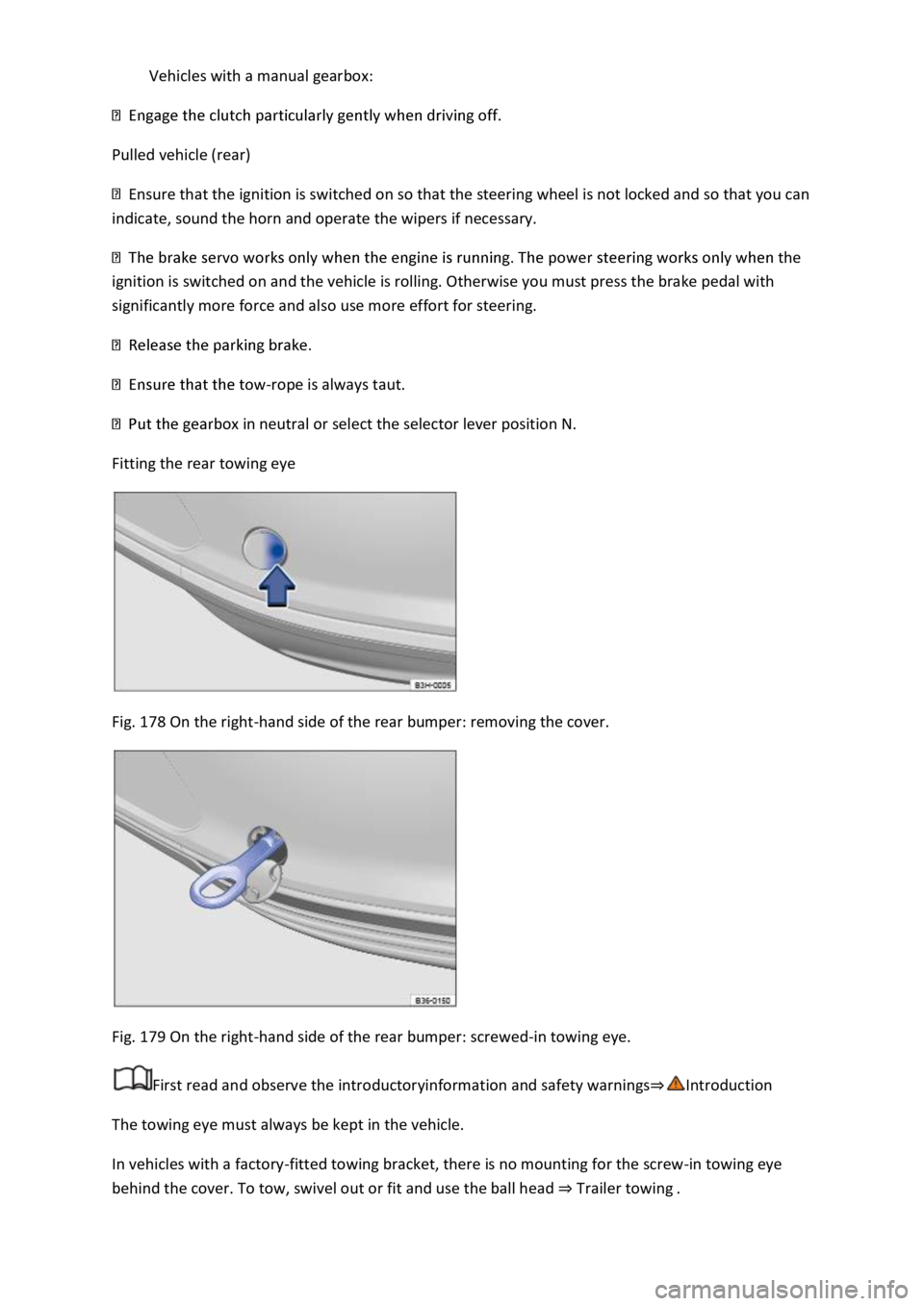
Pulled vehicle (rear)
Ensure that the ignition is switched on so that the steering wheel is not locked and so that you can
indicate, sound the horn and operate the wipers if necessary.
the
ignition is switched on and the vehicle is rolling. Otherwise you must press the brake pedal with
significantly more force and also use more effort for steering.
-rope is always taut.
ox in neutral or select the selector lever position N.
Fitting the rear towing eye
Fig. 178 On the right-hand side of the rear bumper: removing the cover.
Fig. 179 On the right-hand side of the rear bumper: screwed-in towing eye.
First read and observe the introductoryinformation and safety warnings
The towing eye must always be kept in the vehicle.
In vehicles with a factory-fitted towing bracket, there is no mounting for the screw-in towing eye
behind the cover. To tow, swivel out or fit and use the ball head Trailer towing
Page 360 of 502
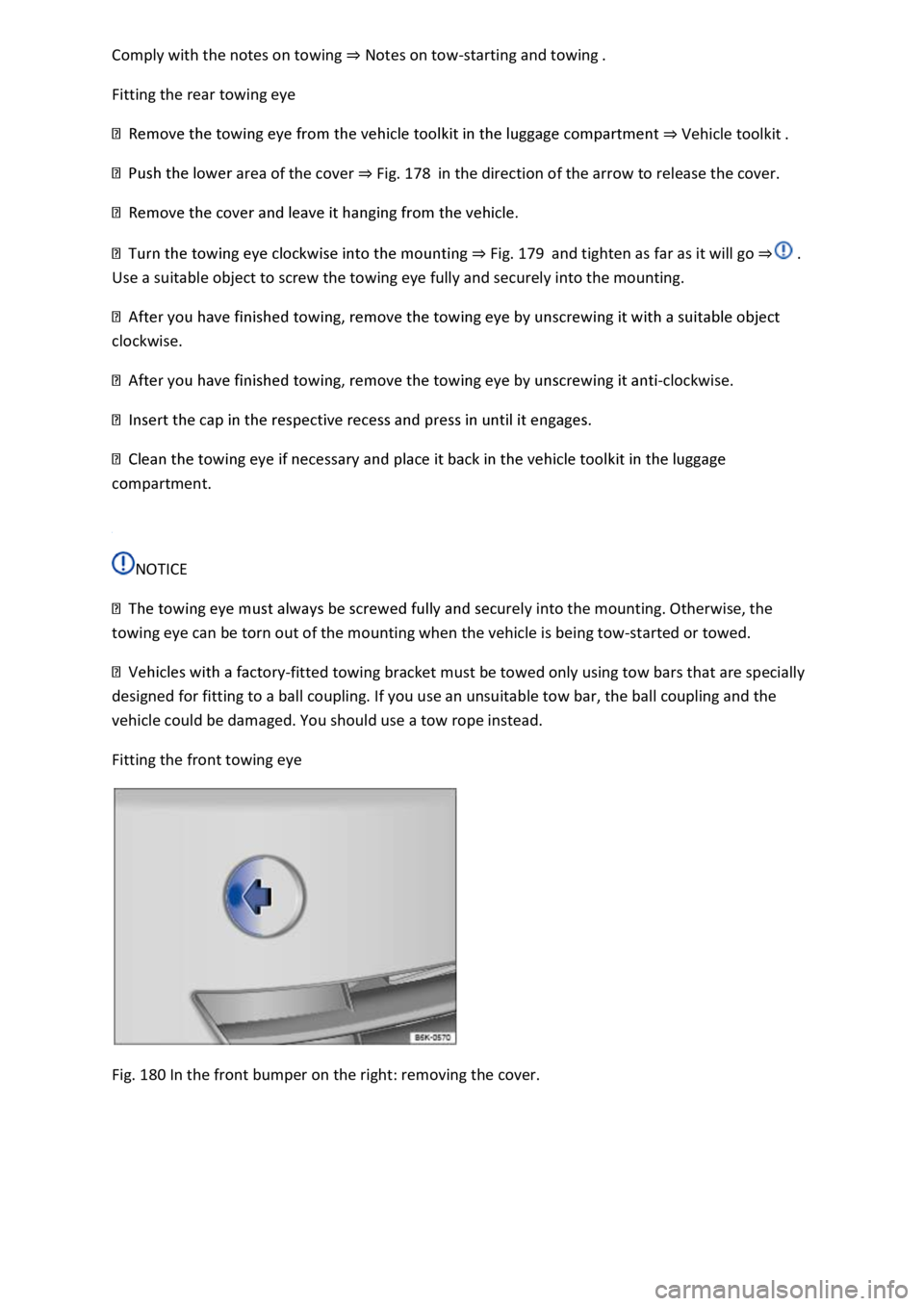
Notes on tow-starting and towing
Fitting the rear towing eye
Vehicle toolkit
area of the cover Fig. 178in the direction of the arrow to release the cover.
Fig. 179and tighten as far as it will go
Use a suitable object to screw the towing eye fully and securely into the mounting.
clockwise.
-clockwise.
compartment.
NOTICE
urely into the mounting. Otherwise, the
towing eye can be torn out of the mounting when the vehicle is being tow-started or towed.
-fitted towing bracket must be towed only using tow bars that are specially
designed for fitting to a ball coupling. If you use an unsuitable tow bar, the ball coupling and the
vehicle could be damaged. You should use a tow rope instead.
Fitting the front towing eye
Fig. 180 In the front bumper on the right: removing the cover.
Page 361 of 502
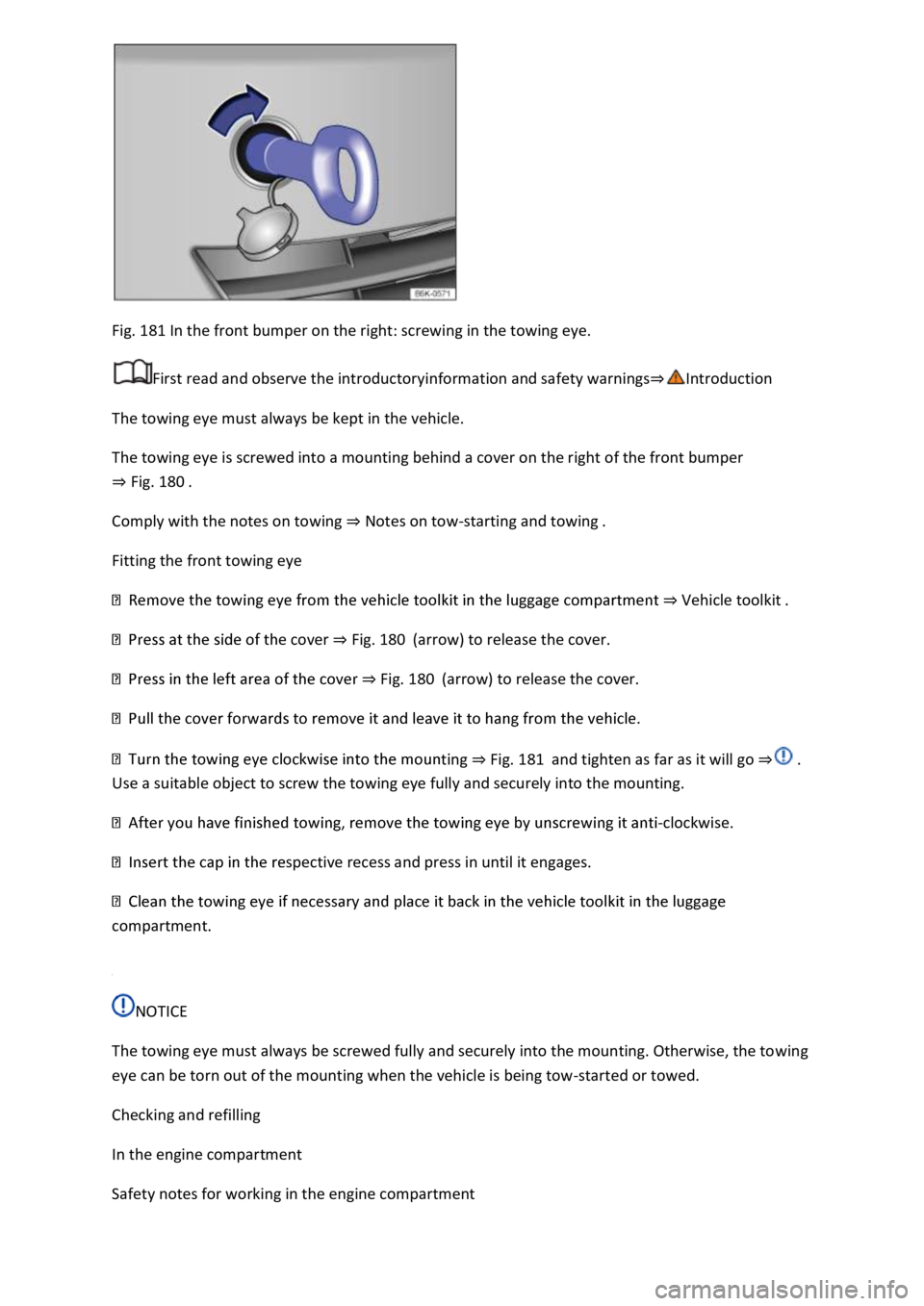
Fig. 181 In the front bumper on the right: screwing in the towing eye.
First read and observe the introductoryinformation and safety warnings
The towing eye must always be kept in the vehicle.
The towing eye is screwed into a mounting behind a cover on the right of the front bumper
Fig. 180
Comply with the notes on towing Notes on tow-starting and towing
Fitting the front towing eye
Vehicle toolkit
e cover Fig. 180(arrow) to release the cover.
Fig. 180(arrow) to release the cover.
ting Fig. 181and tighten as far as it will go
Use a suitable object to screw the towing eye fully and securely into the mounting.
-clockwise.
spective recess and press in until it engages.
compartment.
NOTICE
The towing eye must always be screwed fully and securely into the mounting. Otherwise, the towing
eye can be torn out of the mounting when the vehicle is being tow-started or towed.
Checking and refilling
In the engine compartment
Safety notes for working in the engine compartment
Page 374 of 502
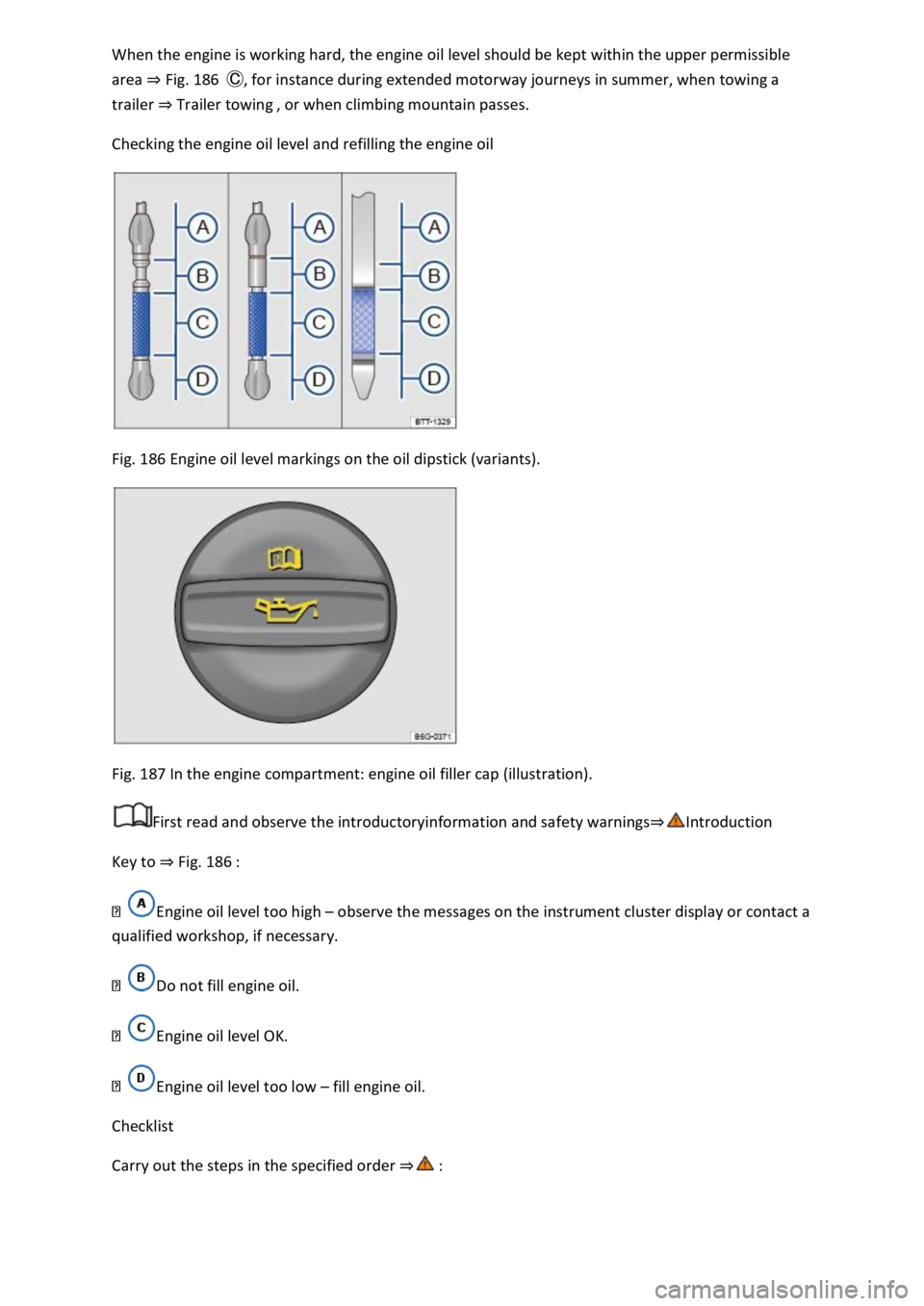
area Fig. 186otorway journeys in summer, when towing a
trailer Trailer towing
Checking the engine oil level and refilling the engine oil
Fig. 186 Engine oil level markings on the oil dipstick (variants).
Fig. 187 In the engine compartment: engine oil filler cap (illustration).
First read and observe the introductoryinformation and safety warnings
Key to Fig. 186
Engine oil level too high observe the messages on the instrument cluster display or contact a
qualified workshop, if necessary.
Do not fill engine oil.
Engine oil level OK.
Engine oil level too low fill engine oil.
Checklist
Carry out the steps in the specified order
Page 404 of 502
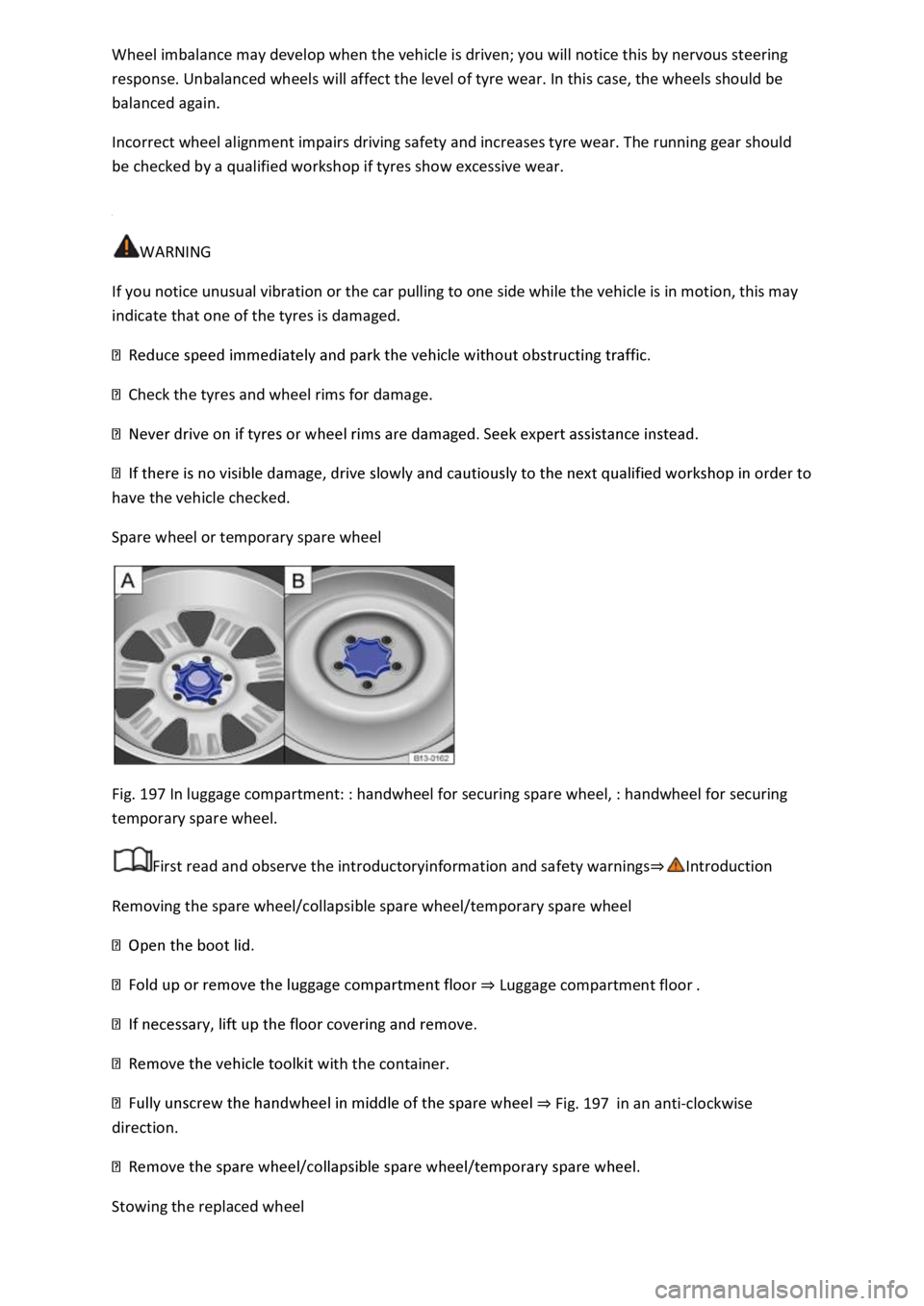
response. Unbalanced wheels will affect the level of tyre wear. In this case, the wheels should be
balanced again.
Incorrect wheel alignment impairs driving safety and increases tyre wear. The running gear should
be checked by a qualified workshop if tyres show excessive wear.
WARNING
If you notice unusual vibration or the car pulling to one side while the vehicle is in motion, this may
indicate that one of the tyres is damaged.
Check the tyres and wheel rims for damage.
have the vehicle checked.
Spare wheel or temporary spare wheel
Fig. 197 In luggage compartment: : handwheel for securing spare wheel, : handwheel for securing
temporary spare wheel.
First read and observe the introductoryinformation and safety warnings
Removing the spare wheel/collapsible spare wheel/temporary spare wheel
Luggage compartment floor
th the container.
Fig. 197in an anti-clockwise
direction.
Stowing the replaced wheel
Page 406 of 502
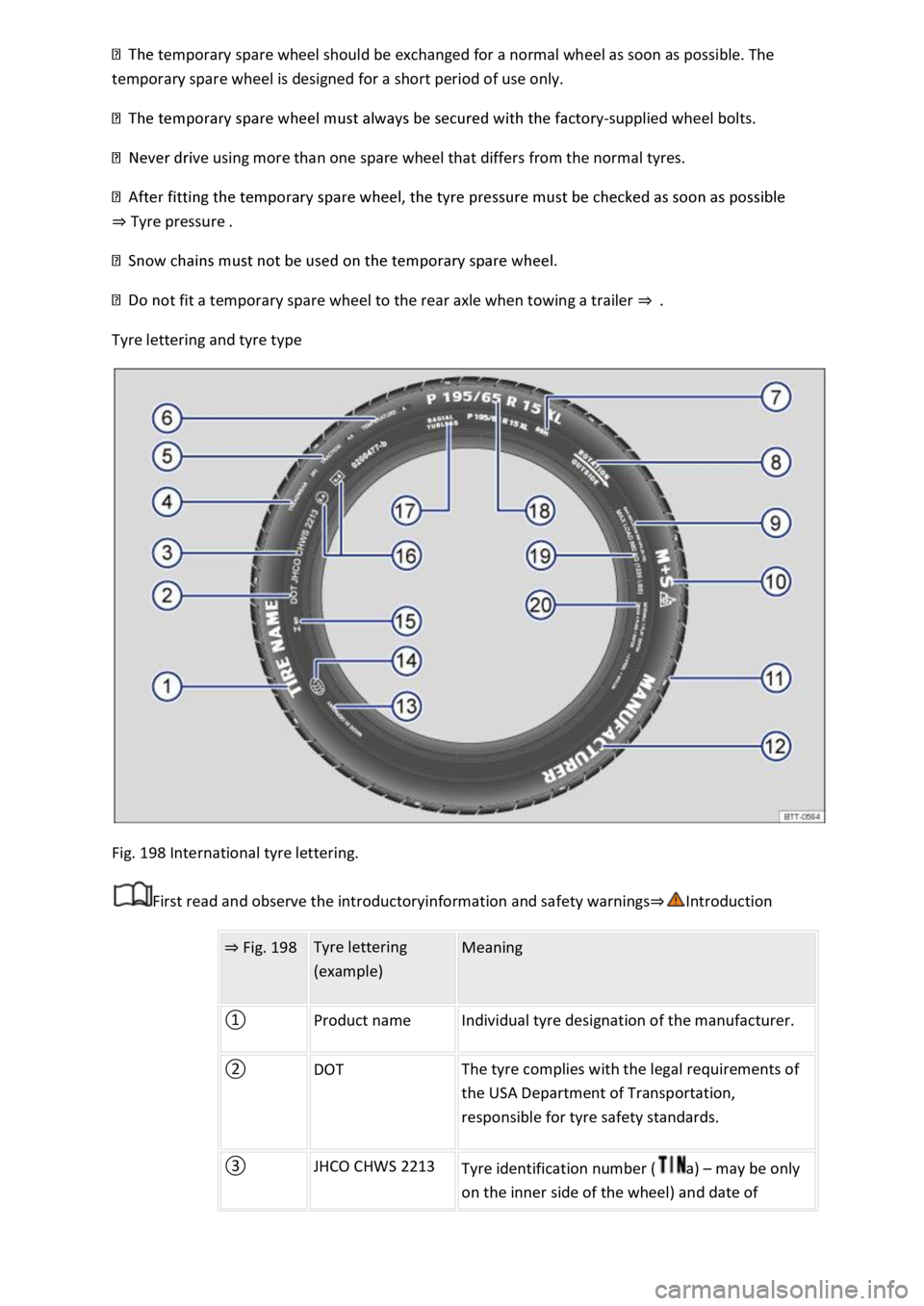
temporary spare wheel should be exchanged for a normal wheel as soon as possible. The
temporary spare wheel is designed for a short period of use only.
-supplied wheel bolts.
ve using more than one spare wheel that differs from the normal tyres.
Tyre pressure
ot fit a temporary spare wheel to the rear axle when towing a trailer
Tyre lettering and tyre type
Fig. 198 International tyre lettering.
First read and observe the introductoryinformation and safety warnings
Fig. 198 Tyre lettering
(example)
Meaning
Product name Individual tyre designation of the manufacturer.
DOT The tyre complies with the legal requirements of
the USA Department of Transportation,
responsible for tyre safety standards.
JHCO CHWS 2213 Tyre identification number (a) may be only
on the inner side of the wheel) and date of
Page 418 of 502

Manual gearbox: select a gear.
Ask all vehicle occupants to leave the vehicle and stand at a safe distance away from moving traffic.
Switch on the hazard warning lights and set up the warning triangle In an emergency. Observe any
legal requirements.
Chock the wheel diagonally opposite the wheel being worked on with a stone, collapsible chocks or
another suitable object.
When towing a trailer: unhitch the trailer from the vehicle and park it properly .
Remove any items of luggage from the luggage compartment.
Remove the spare wheel or temporary spare wheel and the vehicle toolkit from the luggage
compartment.
Remove the hubcaps Hubcaps.
WARNING
Ignoring any of the items on this important safety checklist can lead to accidents and severe injuries.
Wheel bolts
Page 460 of 502

ering in the rear of the vehicle interior because there is
no rear bench seat
Vehicles with four seats: the centre seat on the rear bench seat cannot be used
Transporting children safely
As with vehicles with passenger car approval (M1), approved child restraint systems can be used on
the seats Safe transport of children
Towing a trailer
If the vehicle is approved for towing a trailer, observe any local regulations for driving with a trailer
and using a towing bracket.
If the vehicle exceeds the gross vehicle weight rating or the rear axle load, do not exceed 80 km/h
when towing a trailer. This also applies to countries where higher speeds are permitted. Keep to
country-specific speed limits which may be lower for vehicles with trailers than for vehicles without
trailers.
The vehicle documents contain details of permitted excess loads. If no excess loads are shown, the
vehicle can be driven at 100 km/h, taking account of the laws which apply in different countries.
Technical data
Please refer to the vehicle documentation for technical data.
WARNING
Risk of injury and electric shock from exposed cables.
vehicle are covered up when using the vehicle.
WARNING
Risk of serious injuries due to transporting passengers incorrectly.
ms such as seat
belts and head restraints.
WARNING
Risk of serious and fatal injuries.